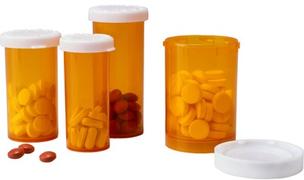10 Ways to Get Your Medications for Up to 50% Off
I was raised by a doctor — who is also board-certified in pharmacology — and by a medical office manager. I also worked in a doctor’s office for about a decade before going into journalism. What I learned from those experiences shapes my life, from what I eat to how I purchase medications. Below are prescription purchasing tips many people overlook, even though they can cut costs by much more than 50 percent.
1. Consider Over-the-Counter Options
Few types of prescription medications have over-the-counter competitors. Still, it doesn’t hurt to ask your doctor or pharmacist if your prescriptions have such alternatives. These drugs are often cheaper, and they might save you a doctor’s appointment. For example, Consumer Reports recently reported that certain over-the-counter antihistamines are generally “equally effective at relieving symptoms” as prescription antihistamines.
2. Try Generics
Generics are one of the best ways to save money on medications. Plus, there’s virtually no reason not to at least try a generic drug these days. The U.S. Food and Drug Administration’s Drugs@FDA database makes it easy to determine whether a generic is therapeutically equivalent to its brand-name version.
“Drug products classified as therapeutically equivalent can be substituted with the full expectation that the substituted product will produce the same clinical effect and safety profile as the prescribed product,” the FDA explains. “Drug products are considered to be therapeutically equivalent only if they … are pharmaceutical equivalents (contain the same active ingredient(s); dosage form and route of administration; and strength.”
Medications in the database have received a therapeutic equivalence code from the FDA and are divided into two main categories based on that code. Drugs that have a code starting with an “A” are considered “therapeutically equivalent to other pharmaceutically equivalent products,” according to the FDA’s website. Drugs with a code that starts with a “B” are considered “NOT to be therapeutically equivalent.”
3. Consider Paying Out of Pocket
If your copay is more than $4, you might be overpaying. For example, big-box stores like Target and Walmart and grocers like Kroger and Winn-Dixie offer a 30-day supply of hundreds of generic medications for as little as $4, and a 90-day supply for $10.
4. Check Online Prices
Prices on the Internet are often lower than those of brick-and-mortar pharmacies. Reputable online pharmacies like HealthWarehouse.com also offer free shipping. Some stores with brick-and-mortar pharmacies have mail-order programs with free shipping. Costco is one example – and you don’t have to be a Costco member to use mail-order online.
5. Use Reputable Online Pharmacies
In the U.S., the Verified Internet Pharmacy Practice Sites program offers online pharmacies a chance to establish their legitimacy. To tell these pharmacies apart from others, look for the VIPPS symbol on pharmacy websites. Also, use the National Association of Boards of Pharmacy’s verification website to look up an online pharmacy’s certification by entering its website address. Prescriptions from outside the U.S. are illegal.
6. Check Strength Prices
Sometimes the per-milligram cost of a medicine varies depending on the strength. For example, HealthWarehouse.com currently sells a 30-day supply of all strengths of the common cholesterol drug Crestor for $243.90. So, the per-milligram cost is as follows:
- 5 milligram strength: About $1.63 a milligram
- 10 milligram strength: About 81 cents a milligram
- 20 milligram strength: About 41 cents a milligram
- 40 milligram strength: About 20 cents a milligram
If you take a 20-milligram dose, for example, you would save around 50 percent — about $126 a month — by getting 40-milligram pills and splitting them. The same percentage of savings is true of 5- and 10-milligram sizes, respectively, and 10- and 20-milligram sizes, respectively. If you would save significantly by splitting pills, ask your doctor whether your prescriptions can be split safely.
7. Ask for a Larger Quantity
At many pharmacies, purchasing a 90-day supply will get you a discount. If this is true of your medications, nicely ask your doctor to write your prescriptions for larger quantities. Explain how it would save you money.
See the rest of list at Daily Finance
Bizzee Thoughts…
You have actually listened to the false belief that “absolutely nothing in life is complimentary,” or “There are no free rides” but I’m here to tell you it actually is feasible to get “something for nothing!” The huge pharmaceutical business each distribute more than $200 million well worth of free prescribed medications yearly to people without prescribed medication protection.
Programs vary, however it generally takes regarding ten company days to get accepted. When you’re in, you will either get your medicines by mail or choose them up at your regional drug store or your physician’s place of business.







